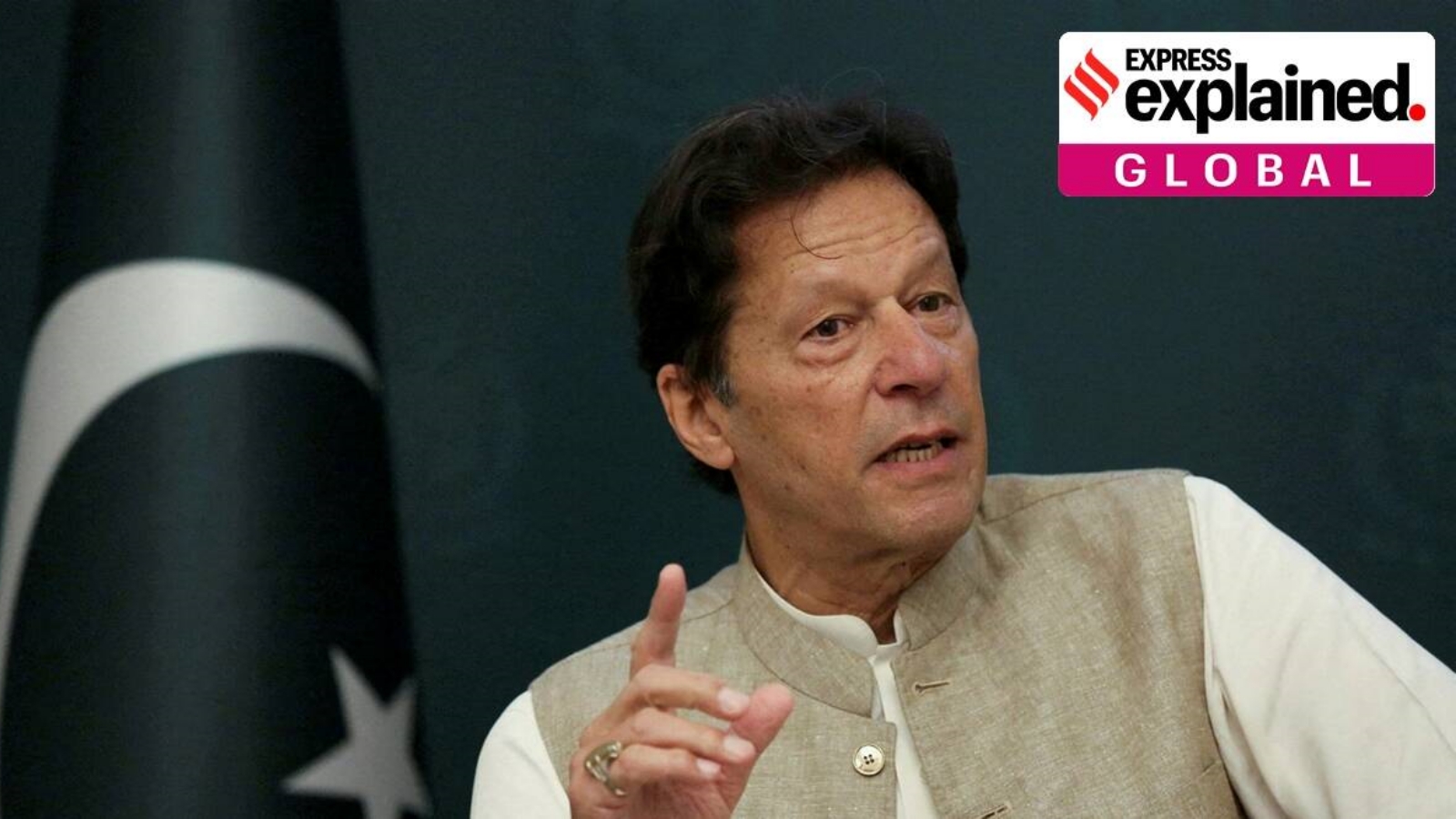Pakistan Elections 2024: Pakistan will hold its 12th national general elections on Thursday. Approximately 12.85 crore voters, about half the country’s population of 24.1 crore, are eligible to vote for a new National Assembly, the lower house of Parliament, and four provincial legislatures.
Two hundred and sixty-six members will be elected to the National Assembly by a first-past-the-post system similar to India’s. Sixty seats are reserved for women and 10 for non-Muslims, and will be allocated to parties in proportion to their share of directly elected seats.
From India’s perspective, elections in Pakistan are about the way the balance of power between the civilian government and the military plays out.
South Block considers the change of Army Chief as the real transition of power in Pakistan, unlike in democracies where elections lead to peaceful transfers of power.
Imran, the discarded
 Imran Khan. AP
Imran Khan. AP
The Army has a huge say in the politics of Pakistan, and is seen as manipulating elections to get their preferred candidate to win. In 2018, the last time elections were held, the Army had “selected” cricket icon-turned-politician Imran Khan to replace the leader of the PML(N), Nawaz Sharif. Imran was put in the Prime Minister’s chair after Nawaz was convicted, but was allowed to leave the country.

Six years on, it is Imran, 71, who in in jail after being sentenced to 14 years in an illegal gifts case and 10 years for leaking secrets. And the elections are centred around his absence.
Imran’s arrest in May 2023 had sparked protests by supporters of his party, Pakistan Tehreek-e-Insaf (PTI). Protesters entered and vandalised some military installations, including a senior general’s home. In the ironfisted crackdown that followed, hundreds of PTI members, including Imran’s No. 2, former Foreign minister Shah Mahmood Qureshi, were arrested, and many leaders were intimidated.
Imran has now been deserted by a section of his party, and leaders such as Jahangir Tareen and some others have formed their own party with the blessings of the Army.
Nawaz, back in play
 Nawaz Sharif (File photo)
Nawaz Sharif (File photo)
The Army’s preferred candidate is again Nawaz Sharif, the 74-year-old three-time Prime Minister who returned to Pakistan in October, after the decks were cleared for him. Nawaz has been done in by the Army twice earlier — in 1999, when Gen Pervez Musharraf led a coup against him, and in 2017, when he fell out of favour and was forced to step down.
His pro-business image, accommodative attitude towards India and the United States, and the skilful administration of his brother Shehbaz Sharif — who was Prime Minister until last August when caretaker PM Anwaar-ul-Haq Kakar took over — have returned him to the Army’s good books.
Zardari, still ambitious
Asif Ali Zardari wants to be President again, and his son, Bilawal Bhutto Zardari — who was Foreign Minister in the post-Imran PML(N)-PPP coalition government of Shehbaz Sharif — as PM. But the PPP is no longer the party it was when Zardari’s wife Benazir Bhutto captured the imagination of the country in both life and death, and its base is now said to be limited to Sindh.
No level playing field
Analysts have repeatedly pointed to the absence of a level playing field in the elections that no one expects will be free or fair.
Imran remains extremely popular, but his workers have been arrested and harassed, the PTI has been denied the use of its election symbol, the cricket bat, and there have been reports of his candidates being stopped from filing nominations.
The “unelected forces” of the Election Commission of Pakistan, the courts and the Pakistan Army are seen as leading the crackdown against Imran and his party. The media were earlier asked to not name Imran in their reports.
The known unknowns
Punjab has more voters than the other three provinces put together — 7.32 cr out of 12.85 cr — and 141 of the 266 general seats in the National Assembly.
Both PTI and PML(N) draw their strength and popularity from Punjab, even though the PPP and Tareen’s Istehkam-e-Pakistan (IPP) are also in the mix. Winning margins in the past have been as small as 1,000-2,000 votes in constituencies with an average 9 lakh voters.
If PTI supporters turn up at voting stations in large numbers, the Pakistan military will find it tougher to rig the elections. A lower turnout could mean a lack of enthusiasm among people who may have resigned themselves to a predetermined outcome.
Turnout in the last four elections — in 2018, 2013, 2008, and 2002 — has been 51%, 53%, 44%, and 41% respectively.
The youth vote could be significant. The number of voters between ages 18 and 35 is 5.7 crore, which is more than 47% of the electorate. Imran is said to have a lot of support in this group.
The 5.9 cr registered women voters constitute 46% of the electorate. The extent of their participation and independence in voting behaviour — different from the men in their households — could be interesting.
Finally, there is the economic situation in the country — the rate of inflation is 30%, the cost of living is high and rising, and unemployment and poverty rates are high. Voters can be expected to consider all of this while voting.
The view from New Delhi
From India’s perspective, these elections are more predictable than ever before. The military has made its choice clear, and some have described the formality of February 8 as the “mother of all selections”.
For India, Pakistan’s continuing support for terrorism is the key question, and it has largely adopted a doctrine of indifference as its western neighbour has slid steadily towards failure on multiple fronts. But the elections could open a window of opportunity.
For the first time in many years, the election cycles of the two countries have aligned. By May, India will have a government with a five-year mandate, while Pakistan’s civilian government will be a few months old. The Army Chief, General Asim Munir, took charge in November 2022, and going by the fact that his predecessor had a six-year tenure, there is some time before there is a change of guard at the GHQ in Rawalpindi.
There is potentially scope for the two sides to look to the longer term in their fraught relationship.

Vikram Sharma is a globe-trotting journalist with a global perspective on international events. His articles offer readers a global perspective on international events, exploring complex geopolitical issues and providing insights into the world’s most pressing challenges.


